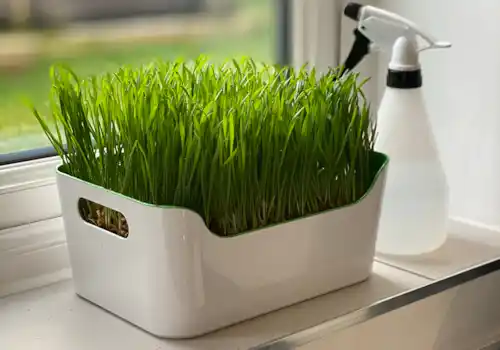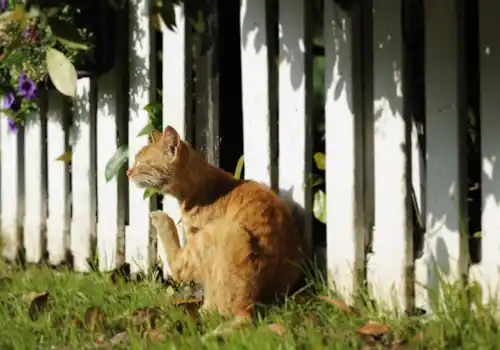How to get the most from your relationship with your vet…
Your relationship with your vet is really important. When it comes to caring for a cat, the vet is the person you will turn to when your cat is sick, needs preventative care such as vaccinations, and often for a range of advice. Having a vet you can trust and who you feel knows your cat will go a long way to making cat ownership a much more positive experience. However, what do our vets want from us to make this relationship the best it can be? Vet Penny Clarke is on hand to help as she reveals 10 things your vet would like you to know…
1. Tell us all about your cat
Diagnosing your cat’s illness is a bit like putting together a tricky jigsaw puzzle. We collect pieces of information about your cat’s health and build a picture to help us work out what’s going on. The more pieces we have, the clearer our picture is of your cat’s situation. We’ll examine your cat for physical changes but we also need information from you about their symptoms and behaviour. Try writing a list of your concerns before the appointment to help jog your memory. Even seemingly insignificant changes in your cat’s behaviour could provide the key to explaining what’s wrong with your cat.
A useful way to record this information is on your mobile phone. Most cats behave unnaturally at the vet’s, so photos and videos of your cat in their own environment can be hugely helpful. We can learn a lot before we even get your cat out of their basket! Videos really help if your cat is:
- Limping, lame, or moving differently.
- Breathing differently.
- Struggling to eat.
- Coughing or sneezing.
- Vomiting or regurgitating food.
2. Vets love samples.
If your cat’s symptoms relate to their toileting habits then don your rubber gloves and get scooping! We’ll happily examine anything you can provide (being a vet isn’t glamorous!) If we need more information about your cat, we’ll send the sample to a laboratory for further testing. Laboratories analyse your cat’s poo by checking for parasites and harmful bacteria. If your cat has urination issues, a wee sample is really helpful. Ask your vet for non absorbent cat litter and collect a sample of your cat’s urine before your appointment.
3. Prevention is better than cure
This old adage certainly rings true when it comes to your cat’s healthcare. Advances in preventative veterinary medicine help cats live longer, healthier lives than their ancestors from as recently as even ten years ago. Vets promote preventative healthcare not for financial gain, but because we see the benefits to our patients on a daily basis. Here are some areas that preventative care can really help:
- Vaccinations
Yearly vaccinations protect cats from cat flu, feline infectious enteritis, feline chlamydophilosis, and feline leukaemia virus. These illnesses are serious, sometimes fatal, but entirely preventable by vaccination.
- Dental care
Around 85 per cent of cats age three and over have some degree of dental disease. The best way to care for your cat’s teeth is to use a flavoured toothpaste (poultry and fish flavours are widely available) with a toothbrush designed for cats. Amazingly, many cats learn to happily tolerate it. If it’s not possible to brush your cat’s teeth, try rubbing cat toothpaste into their mouth or on to dry pieces of kibble. Cat toothpaste contains plaque-busting enzymes which are effective even without brushing. Special dental diets have kibble pieces with an abrasive surface to help remove plaque from your cats’ teeth.
- Body weight
Keeping your cat at a healthy bodyweight can prevent, or slow down the progression of, certain conditions.
- Parasite prevention
If they had the chance, gastrointestinal worms, fleas, ticks, and mites would all happily make your cat their home. Preventing an infestation improves your cat’s health and general well-being. A wide range of parasite prevention products are now available; ask your vet about trying a different formulation if applying products to your cat or giving tablets is tricky. We’ll happily apply the products to your cat so please ask during your appointments.
- Neutering
Please neuter your young cats. Neutering prevents unwanted litters and reduces the chance of your cat developing certain health conditions. For example, 90 per cent of mammary (breast tissue) tumours in entire female cats are malignant. Spaying cats before six months of age reduces the chance of them developing this cancer by 90 per cent. Castrated males are less likely to wander and fight and therefore are less likely to be involved in a road traffic accident or contract infectious diseases.
4. Vet visit stress – your cat
We know visits to the practice can be stressful for both you and your cat. But there are ways to make the whole experience easier for you, your cat, and ultimately, your vet. The calmer your cat, the easier it is to examine them. For example, an important part of our clinical examination is to palpate (feel) your cat’s abdomen. Anxious cats tense their muscles making this more difficult. There are a few ways to help your cat feel less anxious:
- Leave your cat’s basket in the house during the days before your appointment. Your cat will become familiar with the smell and may even venture inside for a nap!
- Try spraying the basket and the inside of your car with a feline-friendly pheromone.
- Your cat may find it less stressful going into their basket bottom first, or by you taking the lid off.
- Cover your cat basket with a large towel to help your cat feel more secure.
- Use the cat-only waiting area to minimise contact with noisy dogs. If that’s not possible, ask to wait in your car or in a quiet room.
- Don’t rush to get your cat out of their basket. Most vets prefer to talk to you about your cat before coaxing them out gently.
- Check if your vet’s is part of the ISFM (International Society of Feline Medicine) cat-friendly practice scheme. Member practices demonstrate their commitment to low-stress cat handling and have extra facilities to make their cat patients feel at ease. If your practice isn’t accredited, it doesn’t mean they’re not cat friendly. But it’s a useful guide, especially if you move to a new area and need to select a practice.
5. Vet visit stress — you
We’re keen to make your visit to the vet’s easier too. If you feel overwhelmed, upset, or have questions about your cat’s diagnosis and treatment, please tell us. If we can’t answer all your questions in one appointment, we can arrange for another meeting, provide written information, or direct you to reputable online resources.
If you have additional needs and feel comfortable sharing this information with us, we can plan together how to make your visits to the practice easier. Cat baskets can be heavy and awkward to carry; please tell us if you need help bringing your cat in from the car.
Sometimes our waiting rooms can be noisy, bright, and smell of strong disinfectant. If you prefer to wait in a quiet space, just ask. We try to run on time but sometimes we may be a little behind. If you or your family find waiting difficult, please tell us and we’ll try to rearrange things for you. Don’t be afraid to tell us how we could improve your visits. We are vets because we love animals but we care about humans too!
6. The trials of tabletting
Cats frequently outwit us but they take it to the next level when it comes to tablet avoidance. We know we have the easy job of prescribing your cat’s medication — you have
the hard job of actually giving it. Ask your vet or nurse to show you how to correctly give your cat a tablet. If you’re still finding more tablets stuck to your carpet than are going inside your cat, tell us.
Many medications come in a variety of formulations. Sometimes it’s trial and error to find the most suitable for your cat. Hyperthyroidism medications, for example, come in tablets, liquid, or dietary forms. We’re happy to prescribe a different medication if it means your cat regularly receives their treatment.
7. Cats hide pain
Cats have a natural instinct to hide their pain, often showing only very subtle, difficult to spot symptoms. Painful conditions that may not be immediately obvious include osteoarthritis, dental disease, cat bite abscesses, medical conditions (such as pancreatitis, constipation, or infections), hypertension (high blood pressure), and injuries (amazingly many cats with pelvic fractures can still walk).
IF YOUR CAT SHOWS ANY OF THE FOLLOWING, MENTION IT TO YOUR VET:
- Withdrawn or grumpy behaviour.
- Matted fur or bald patches from over/under grooming.
- Appetite changes.
- Limp or stiff walk.
- Hunched sitting, or lying, position
8. Older cats need MOTs
It’s not uncommon for cats to live well into their late teens or twenties. But as cats get older, their bodies change making them more vulnerable to many age-related health conditions. And because cats hide discomfort, many of these conditions aren’t obvious.
Vets like to examine senior cats (aged 11 and over) at least twice a year. During these ‘MOTs’ we’ll fully examine your cat paying particular attention to their:
- BODY CONDITION SCORE (changes in bodyweight can indicate conditions such as kidney disease, hyperthyroidism, and diabetes mellitus).
- BLOOD PRESSURE — hypertension (high blood pressure) is very common in older cats.
- TEETH — older cats are more likely to have dental disease due to wear and tear.
- CLAWS — if your cat finds it difficult to scratch, or doesn’t go out much, their claws may need trimming.
- FUR — cats in pain might overgroom or find grooming more difficult. Bald patches and matted fur are the signs we check for.
9. Beware of the web
There are many websites and online forums giving misleading (and even dangerous) advice. Consider the source of any information you read and check how robust their references are. Vets are always happy to signpost safe, reputable websites. Remember, common things are common! Don’t panic if an internet search of your cat’s symptoms lists serious, rare conditions. Most cats visit the vet’s with straightforward, treatable problems. Vets are aware of the more complicated conditions and know when to refer your cat for more specialised care.
10. Cats are sensitive to their environment
Environmental enrichment is important for all of our cat patients, especially those with stress-related conditions. Often, the treatments we prescribe are more effective when we work in partnership with you to create a cat-friendly home environment.
For example:
- Cats with FLUTD (Feline lower urinary tract disease) need medical treatment combined with a low-stress living environment. Do you have sufficient litter trays, food bowls, water bowls, and beds for the number of cats you have? Can your cat escape enthusiastic, small children? Are neighbouring cats bullying your cat?
- Arthritic cats often benefit from extra padding in their beds, steps to reach their favourite hiding places, and low-sided litter trays.
Did you know? Some vet’s will provide calming pheromone sprays in the waiting room for you to use.







